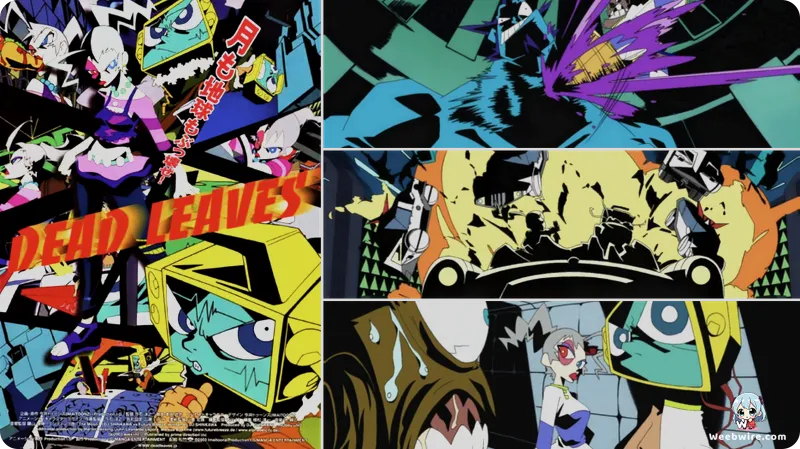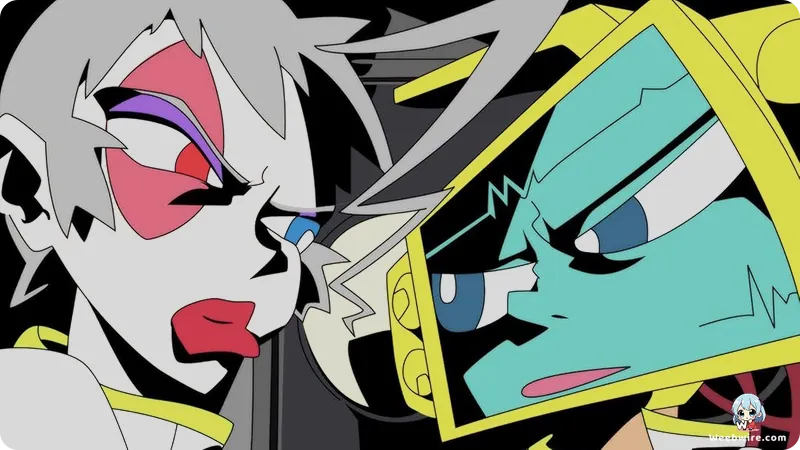Unleashing Anarchy: Why Dead Leaves Endures as a Landmark in Experimental Anime

In the vibrant annals of animation, few films defy convention with the raw audacity of Production I.G's 2004 cult classic, Dead Leaves. Marking the explosive feature-film directorial debut of the visionary Hiroyuki Imaishi, this animated tour-de-force is a kaleidoscopic assault on the senses, a blast of unfiltered punk energy that continues to captivate and challenge audiences two decades later. Its very existence powerfully testifies to unbridled creative freedom, proving anime's expressive potential extends far beyond traditional storytelling.
A Distinct Visual Language
At its core, Dead Leaves's enduring appeal lies in its unique, instantly recognizable visual aesthetic, a signature Imaishi style later refined in iconic works like Gurren Lagann and Kill la Kill. The film features hyper-stylized, exaggerated animation with incredibly thick lines and a deliberately limited color palette dominated by stark primaries. This isn't just artistic choice; it's a declaration, a rejection of realism for pure, kinetic expression, crafting a world both surreal and viscerally immediate. This rebellious, pop-art sensibility, infused with anti-establishment grit, ensures Dead Leaves remains a visual spectacle unlike almost anything else in the medium.
Relentless Pacing and Narrative Drive
Adding to its distinctiveness is its relentless, breakneck pacing. Clocking in at a mere 59 minutes, Dead Leaves is a masterclass in non-stop action and narrative efficiency. From the moment amnesiac protagonists Retro and Pandy awaken naked on Earth and launch into a chaotic crime spree, the film rarely pauses. This frenetic speed is intrinsic to its identity, plunging the audience into constant engagement, akin to a fever dream. Information conveyed through rapid-fire visuals and sharp dialogue delivers a potent dose of animated chaos distinct from sprawling narratives.

Iconic Characters and Deeper Meanings
The protagonists, Retro and Pandy, are studies in bizarre yet iconic character design. Pandy with her formidable drill arm, and Retro with his television set for a head. These instantly memorable designs hint at deeper themes of identity and dehumanization; their amnesia and unusual forms make them ideal conduits for exploring self-discovery and freedom in a world bent on control. Their tumultuous journey becomes a powerful assertion of individuality against oppressive forces.
Beyond the Mayhem: Themes and Production Courage
Production I.G, renowned for Ghost in the Shell, demonstrated remarkable artistic courage in greenlighting Dead Leaves. This experimental project allowed Imaishi's team to push creative boundaries unfettered by commercial constraints. Beyond its surface mayhem, Dead Leaves surprisingly delves into profound psychological and satirical depths. While ostensibly a prison break from the lunar facility 'Dead Leaves', a colossal waste disposal plant, the film subtly critiques consumerism, corporate control, and freedom. The prison's bizarre inmates and eccentric warden form a microcosm of society, making the protagonists' fight for escape a potent metaphor for breaking free from societal norms.
An Enduring Cult Classic
Dead Leaves's enduring legacy as a true cult classic is a testament to its singular vision. Despite its initial OVA release, it garnered a devoted following. Fans revere its raw energy, unapologetic weirdness, and steadfast refusal to conform. For those yearning for an anime experience that is genuinely extraordinary, a wild, untamed ride that challenges perceptions and delights with its sheer audacity, Dead Leaves remains an indispensable watch, a standalone masterpiece of experimental animation that dared to be different, and succeeded with spectacular, unhinged brilliance.
Credits
Dead Leaves
Author
Hiroyuki Imaishi
Cover Art
Hiroyuki Imaishi
Studio
Production I.G
Publisher
Production I.G
Producers





